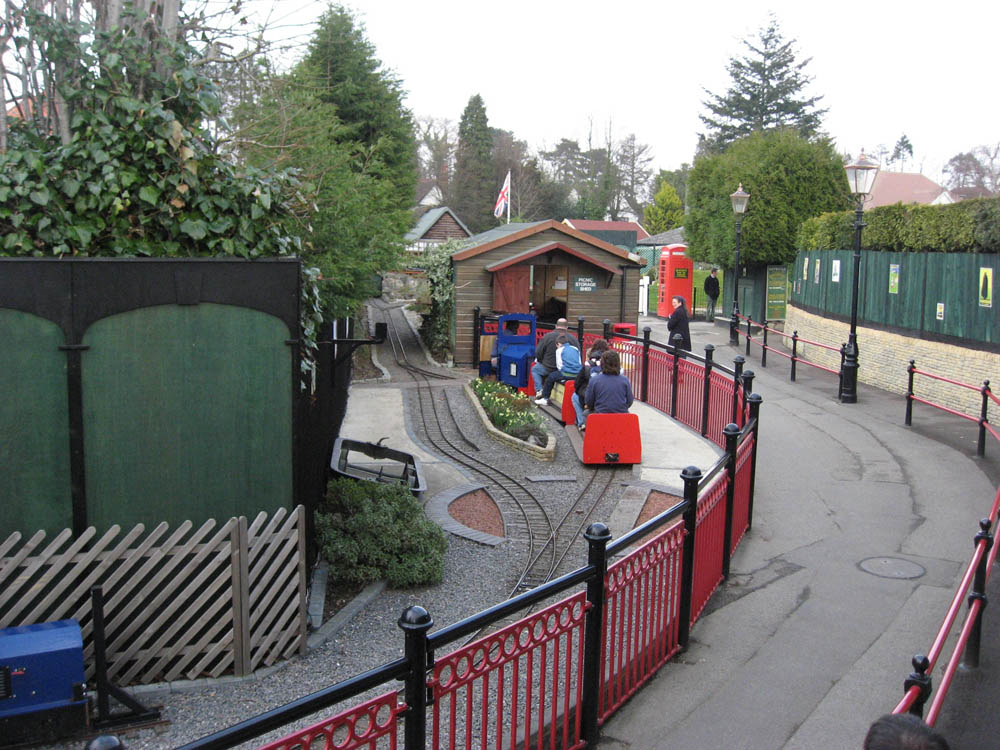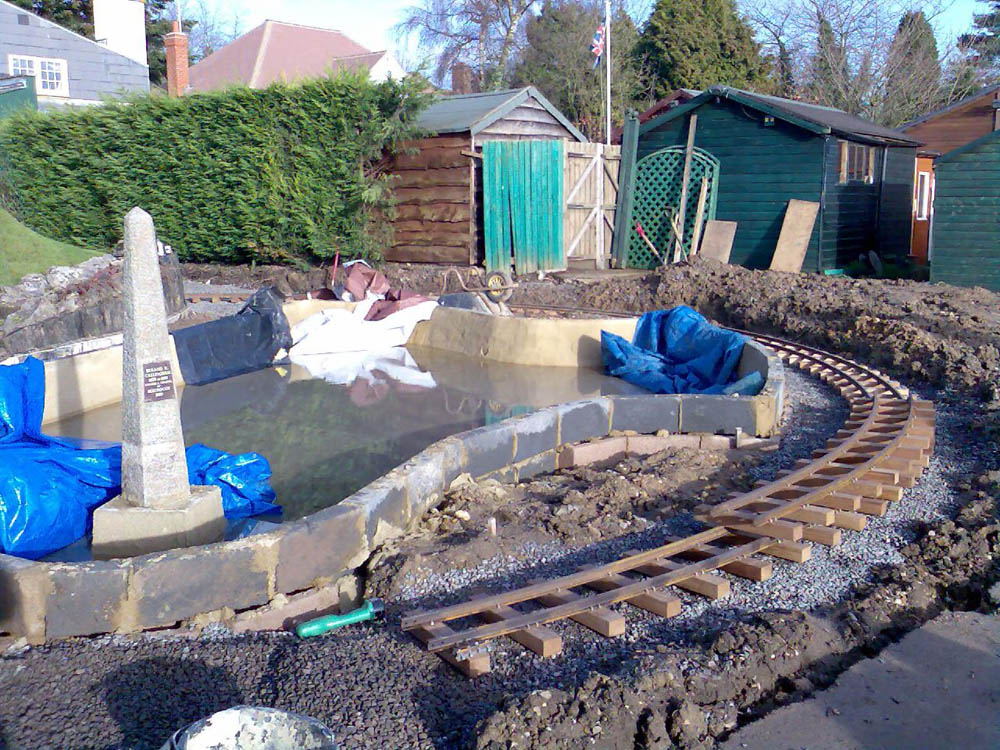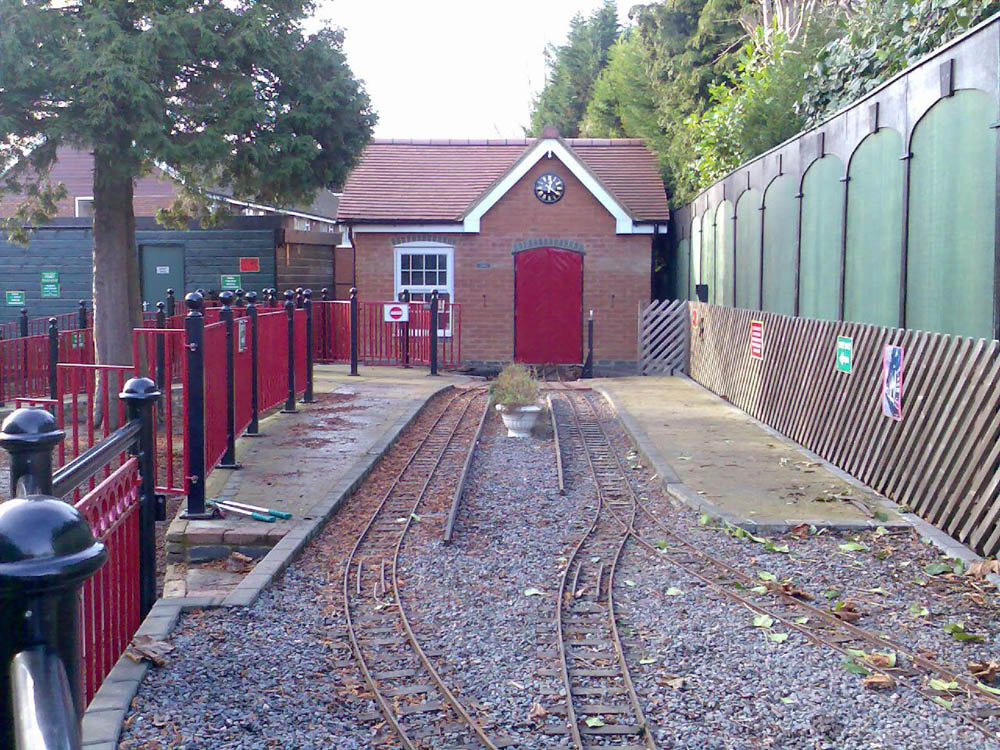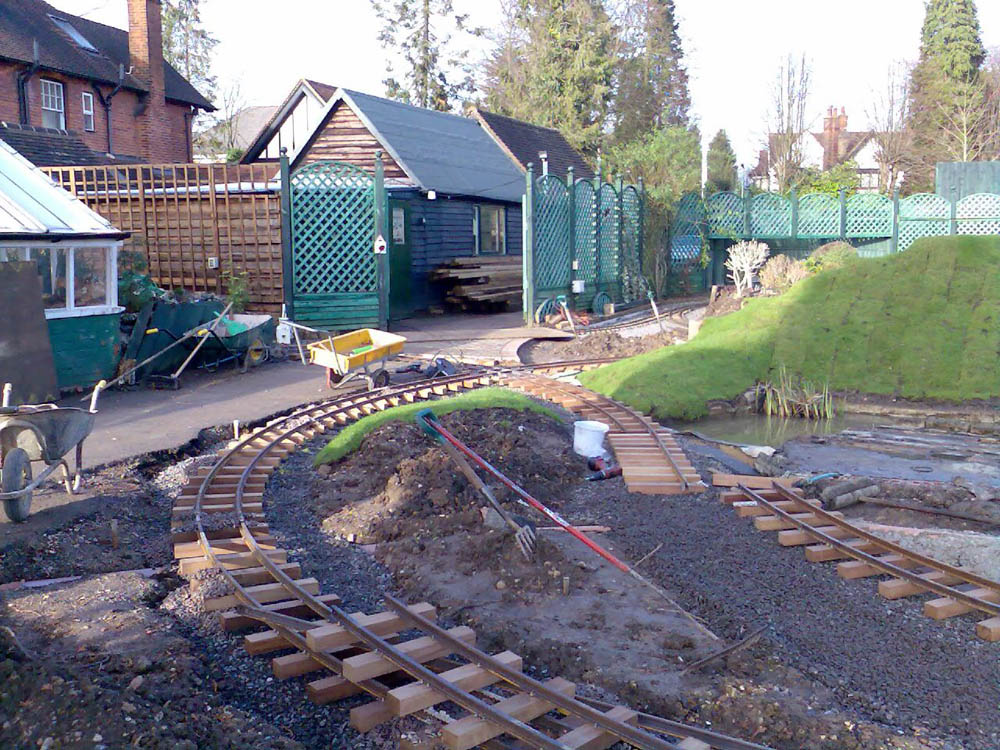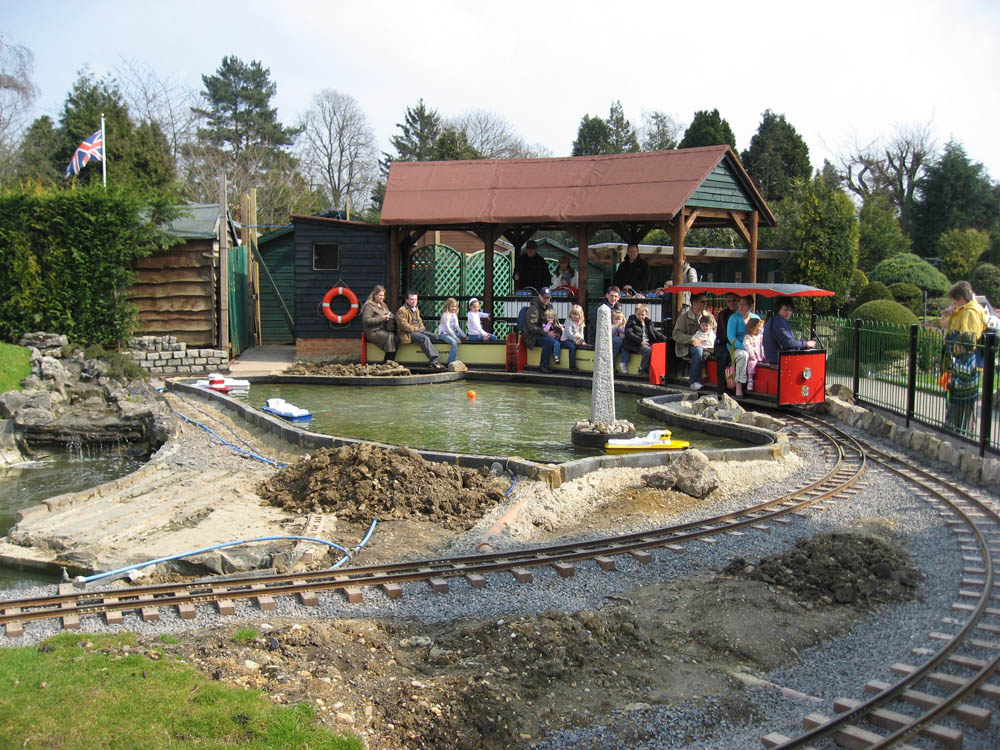History
The below article originally appeared in 2007 in the Seven and a Quarter Inch Gauge Railway Society journal. If you’re interested in miniature railways, and perhaps would like one of your own, then the 7¼” Society is the best place to start. We always like hearing from other railway enthusiasts, so do come and say hello.
Early beginnings
It all started, as all the best plans do, on the back of an envelope. We were standing in the replica GWR signal box that controls the vast (10 scale miles) Gauge 1 model railway that runs through the Model Village.
We wanted a new project that would give an added bonus to any family’s day out, further enhance Bekonscot as a railway-themed day out and provide a new revenue stream for the charity that runs the Model Village.
A few evenings and pints later, the project was born. We set up a “test” line consisting of a portable track running 80 yards in a straight line into a works yard. The Vale of Aylesbury Model Engineering Society lent us a portable track and we hired a Coronation 5” gauge loco from Maxitrak. Over two weekends, we carried several hundred people sitting on a wooden box with wheels at 20p per go. The queues stretched around the site: it caused havoc. The railway proved a massive hit with the public.
Discussions were had with suppliers and the board approved a budget. Advice was sought from VAMES, Miniature Railway Supply Co., Maxitrak and the Moors Valley Railway. We didn’t want a “round the park” tourist railway. We wanted a narrow gauge, Heywood-style estate tramway which would have passenger rides as its main function, but have capabilities to transport goods between our yards and sheds too.
A proposal was made for a short 7.25” gauge line weaving behind some workshops, between sheds and storage areas, and around an old rose garden to the side of the site. Somewhat surprisingly, 20’ curves would give us just the route needed, squashed in alongside the boundary fences and without interfering too much with the Model Village.
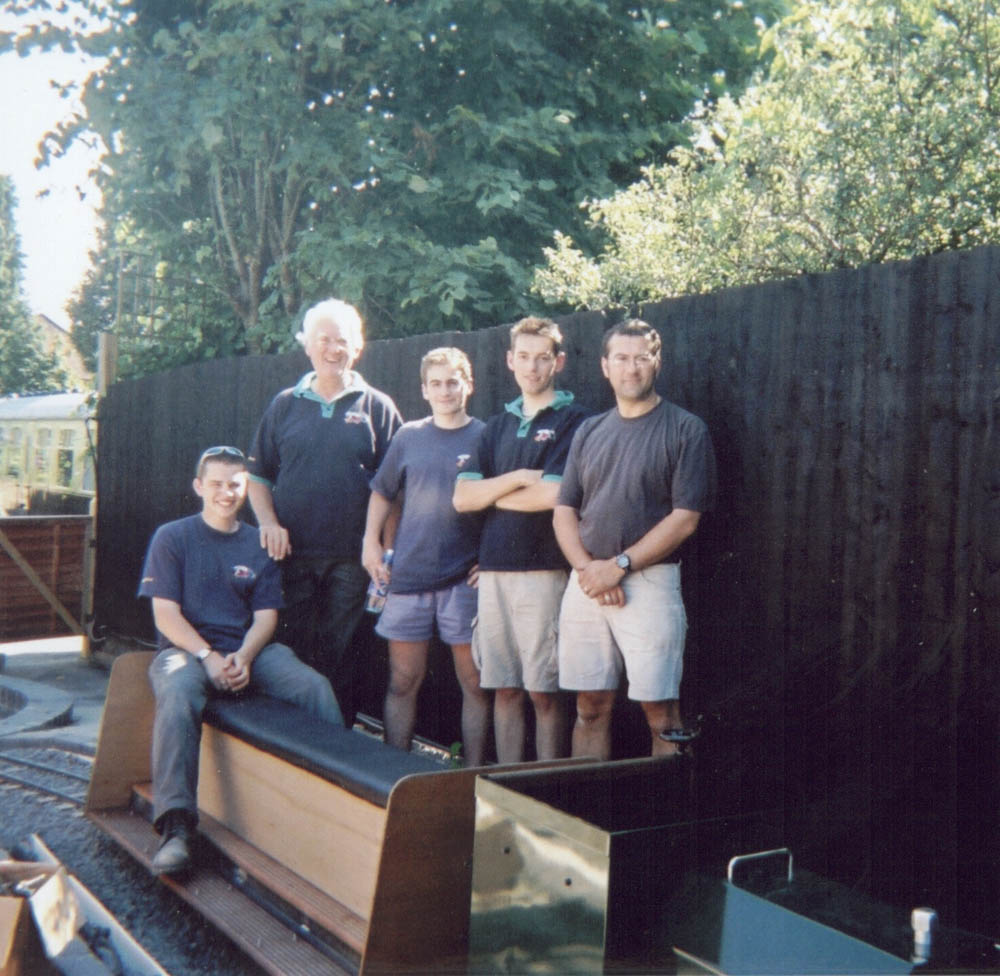
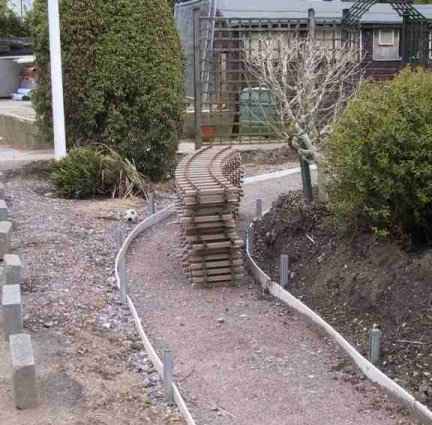
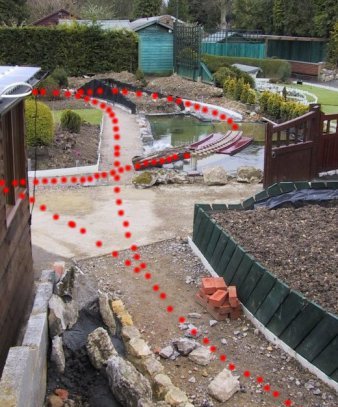
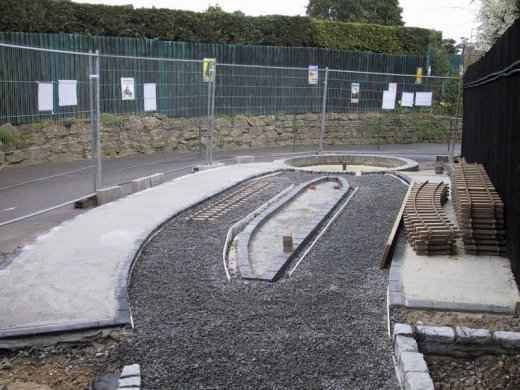
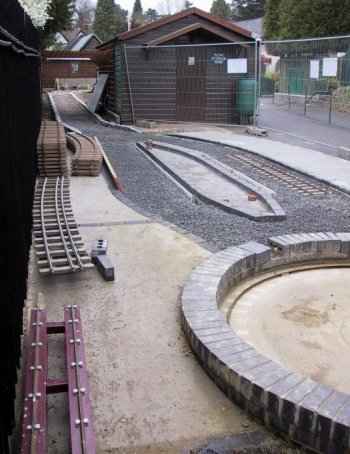
Things get moving
Over the winter of 2000/1, sheds were moved or rebuilt, ponds dug and massive foundations with infrastructure laid.
2lb rail arrived from the MR Supply Co., and the Bekonscot team, before having only built Gauge 1 railways, learned quickly how to build them in 7.25” gauge: same principles, just a bit heavier. Maxitrak delivered one of their unusual BE Hudson Hunslets to us as motive power and two large trollies, solidly built by us to our own design, were ready for the 2001 season. Although not pretty, they are incredibly stable and feature two footboards for both big and little legs.
The first trains ran in August 2001 and were packed from the word go. We were overwhelmed – we’d expected to carry 20% of the number of model village visitors but we are (still) taking 50-70%.
The Maxitrak Hudson (now named Sprocket) was a good basic little workhorse, but even successive gearing, braking, controller and chassis improvements weren’t enough. A Pfeifferbahn 0-4-0+T BE was bought from Peter Scott’s railway in Reading and a couple of BE bogies, from locos run on the Olympia Exhibition railway, were built into a huge experimental S/O loco with tram skirts (now scrapped).
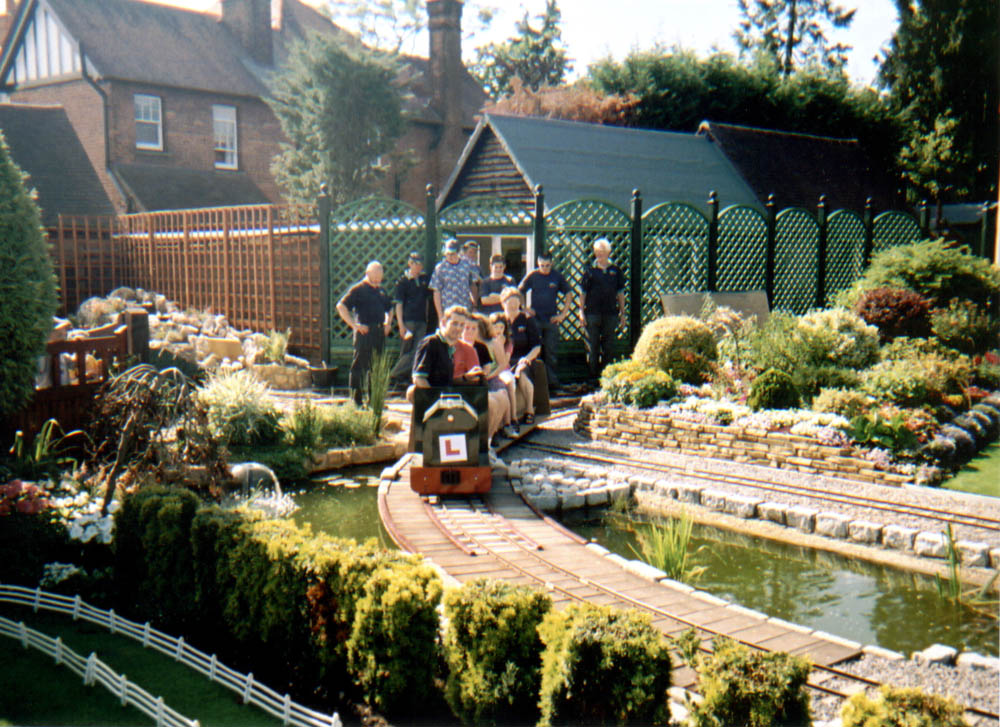
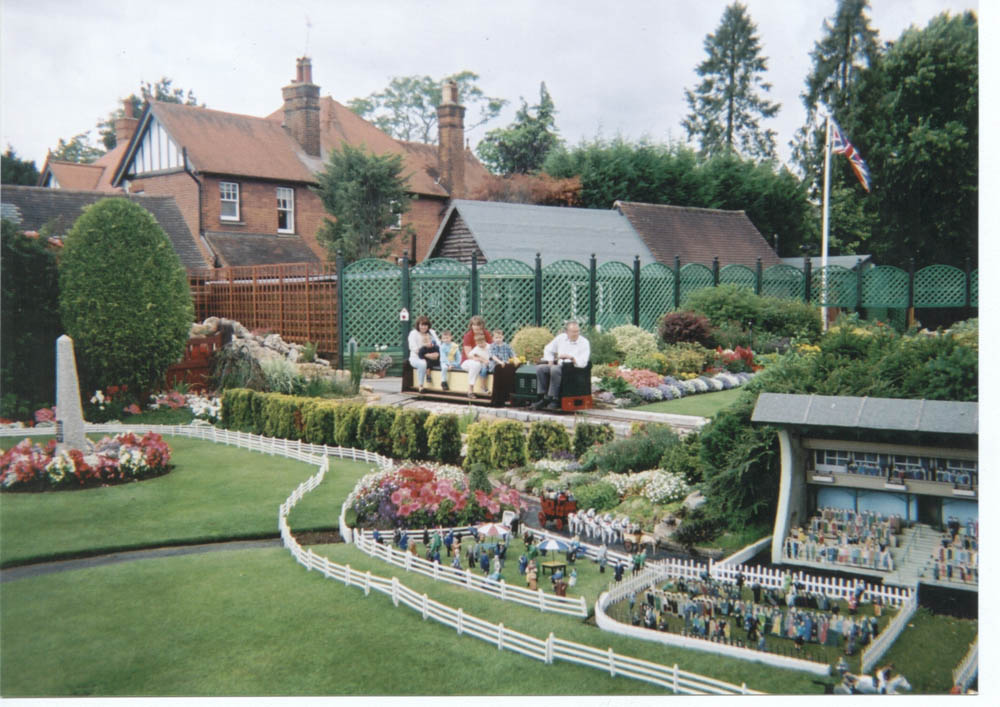
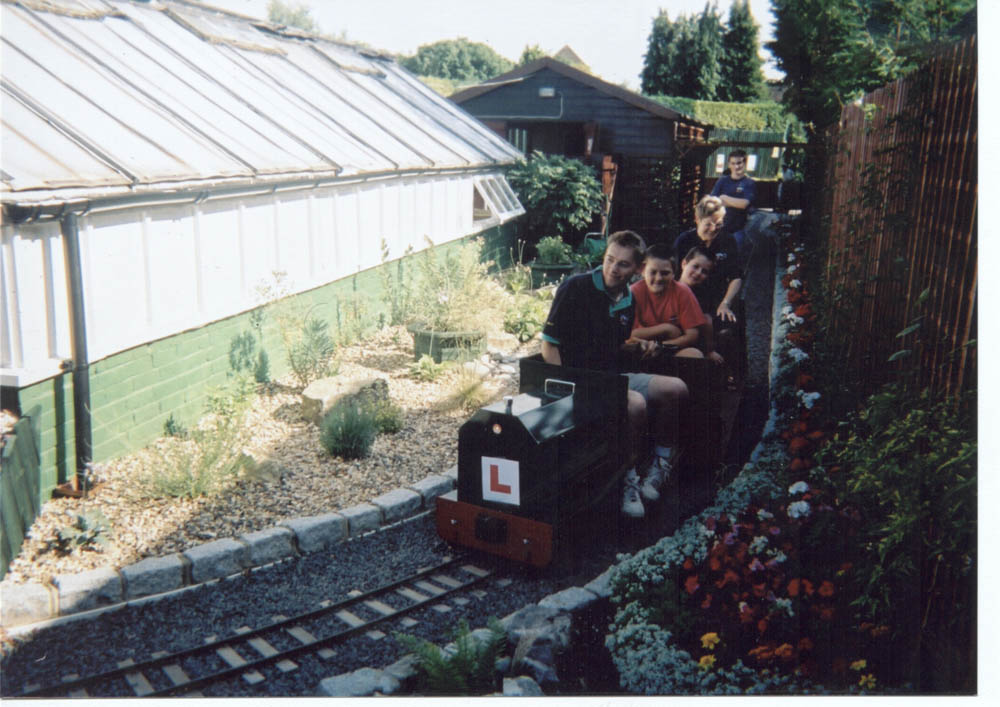
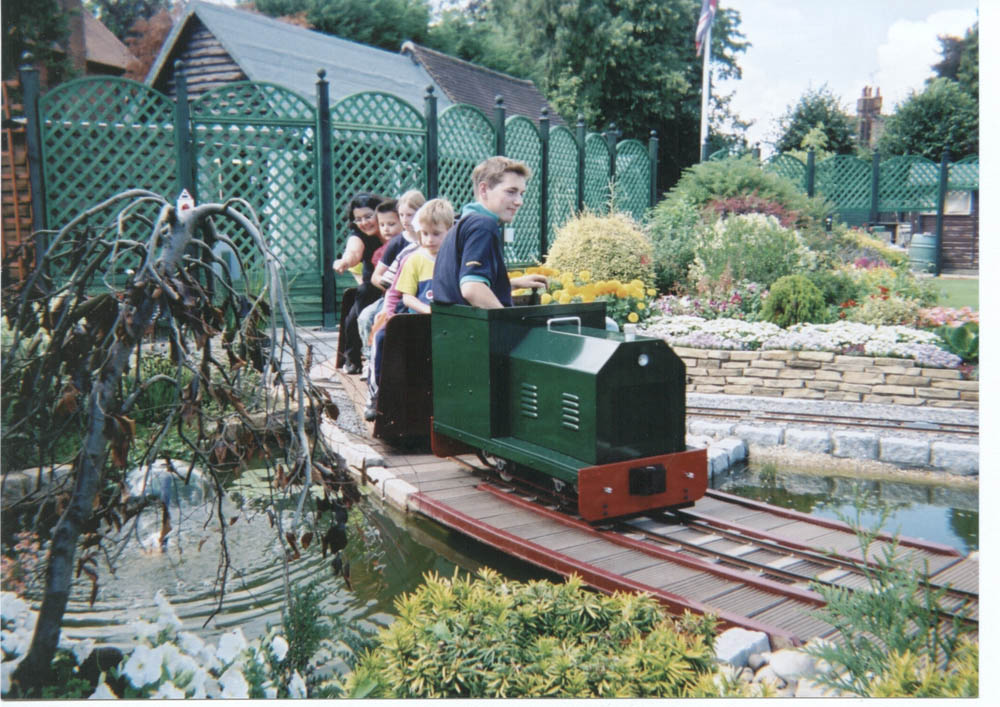
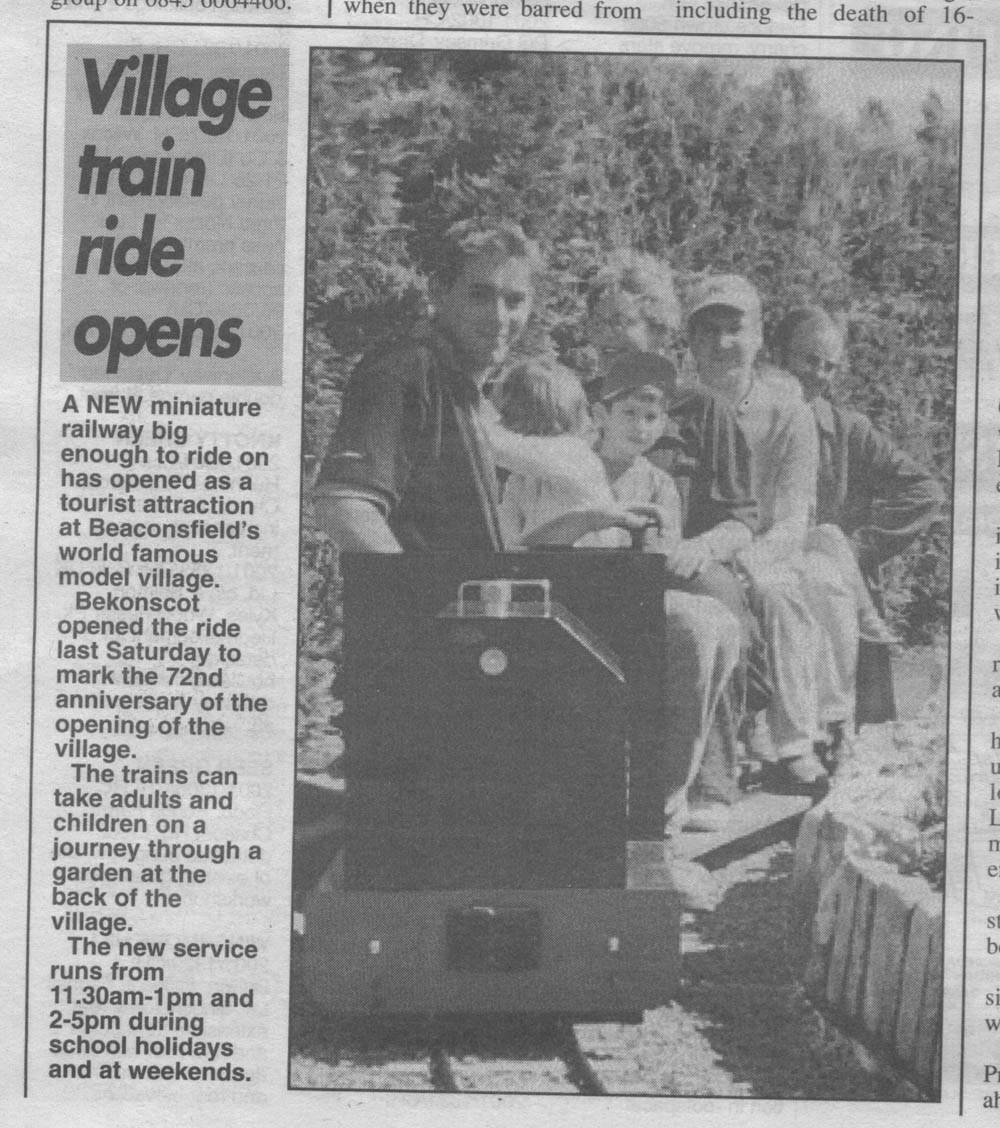
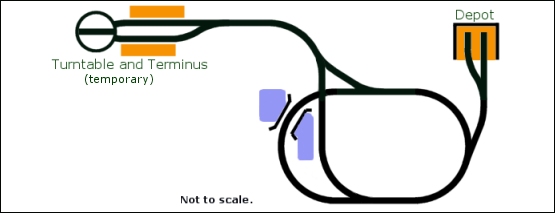
Growing up
A short extension was built between 2004-6, extending the run by only a few yards but making the whole system more flexible. The former terminus became a passing loop; the turntable became a turnout and the line continued around (another) tight corner, re-siting the terminus at 90 degrees to the old one. Interestingly whilst digging foundations for the new station we dug up three 2’ gauge skip wagons, used by the contractors during the construction of Bekonscot in the 1920s. Later evidence suggests that staff then used them on their own estate line to move goods around the site, just as we do now.
This new terminus has longer platforms (still only 30’) but with several space-saving features: all of which have fitted into the tiny space available to us with but a few inches to spare.
The two roads converge at the far end of the platforms with a turnout mounted on the turntable. This unique arrangement is perfect for the location: as the headshunt of the loop runs straight into the stock shed behind, this sprung-loaded point can either act as a simple run-round loop or a full blown turntable.
The headshunt inside this stock shed is actually any one of three traverser roads, built from steel girders, rolled across and locked in place. This provides three 10ft storage roads. Through accurate surveying to within several thou of an inch, we managed to get everything in that we needed, with but inches to spare. Throughout the build, we’d realised that if any one of the many immovable obstacles or boundaries was but 6 inches different, we’d never have been able to do it.
All developments are constrained not just by our boundaries and budgets, but also our neighbours. The site in 1929 was in open fields, but now we are situated in one of the UK’s most expensive postcodes, with large family houses on all sides; the owners of whom are keen not to be disturbed by noisy locomotives. And we like our neighbours.
Not content with having a neatly matured railway in 2006, we decided to rip most of it up and expand over the winter of 2006/7 to give a longer ride. The original inverted balloon loop design was taken up and expanded the circuit slightly. This gives a figure of eight route, as can be seen from the route map. The MR Supply Co. was unable to supply 2lb steel rail in time, so we opted for 6lb instead: as time goes on we will relay the whole line in this; much better for the intense service we require. It also looks the part: that chunky narrow gauge look we always wanted.
With a route length of some 247m and buildings or neighbours on all sides, there are simply no more extensions possible, so improvements will be stock, engineering and scenery. 2008 saw a redesign of the abandoned station area, widening the loop, adding a single slip and some more siding space. 2009 was also the year that we installed full signalling around the station for more intensive running.
